Enjoy my most recent posts
The articles are being categorize into various sections and you can find them in the individual sections such as Shrimp, breeding, tips and others. On mobile devices all articles will be shown. If you want to find older articles please refer to Archive Should you not be able find an article you wish to read about or learn more on, please feel free to contact me using the Contact page.

This section will discuss on grading Particularly the black fancy tiger but can generally use it as a methodology for grading. One of the reasons for sharing this article really is about how grading is done from a judge and seller perspective. I am honoured to have a judge and seller share with me on this.
Let us start with having the very best. Black fancy tiger grade 1.

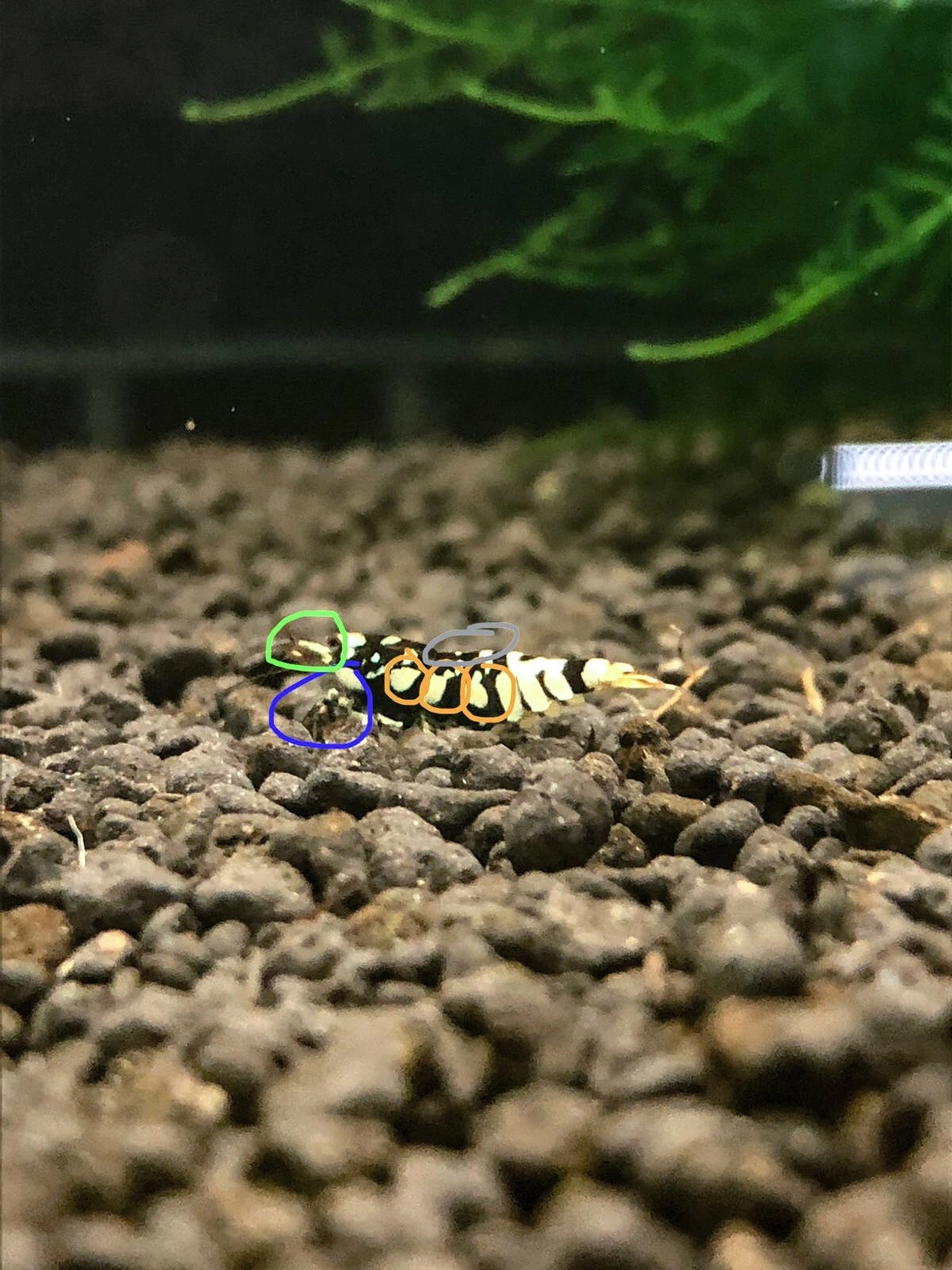
Let’s look at where it has been circle.
Green circle denote a coloured rostrum indicating that Color is present. This is sometimes missed out by hobbyist and can easily be downgraded to grade 2
Blue circle denote spider leg or legs with Color. A black fancy with spider leg is highly sought after.
Orange circle denotes the three white spots against the black shell gives a 50:50 balance between white and black.
Grey circle denotes the black backbone area where it continue to provide a 50:50 black and white to the overall shrimp appearance.
Now that all the circles has been discussed, let’s look at the overall shrimp, it doesn’t have any transparent in the shell which makes it either a grade 1-2. However, what make this a grade 1 shrimp is due to the fact that it has all the above qualities with strong stripe marking and no transparency.
2nd grade : female
There are two kinds of 2nd grade for BFT, one of it have very nice stripes and the other have no transparency in the shell. This is the main difference between grade 1 and 2. Grade 1 have all the strong characteristic whereas grade 2 is short of one of those characteristic.

As you can see here that the stripes on this shrimp is considered full but it is lacking in fullness of colors. The black area isn’t black enough on the front part of the head and belly area make the shrimp appear a little patchy. This however is already considered a high grade shrimp where you can use this kind of female to breed out grade 1-2 shrimplets.
3rd grade: female


Reason why this is a 3rd grade female is due to lesser stripes on the last two line. It didn’t connect towards the top. However the face pattern and front portion is at least a grade 2 type. The black to white ratio is 40:60 hence it has dropped its grade from 2-3. This however is very subjective as the shrimp May become a 2nd grade in future after molting as this is still consider a young shrimp. I’m using ADA powder soil so shrimp may appear to look bigger. On the same shrimp the other side of the pattern does consist of transparent areas under the belly which is one of the most difficult areas to work on. On one side it’s grade 2 on the other side is grade 3 but to err on a safer side I will grade this as 3 instead of 2.
Gene shrimp:
These are shrimp that is use for breeding masses to increase female quantity for selective breeding. As you can see that the stripe pattern and transparency is obvious.



now that the brief understanding of grading is being laid out here is a picture of the grade 1-3 and the last one gene shrimp.

You can now clearly tell the differences between the grades.
The master has spoken
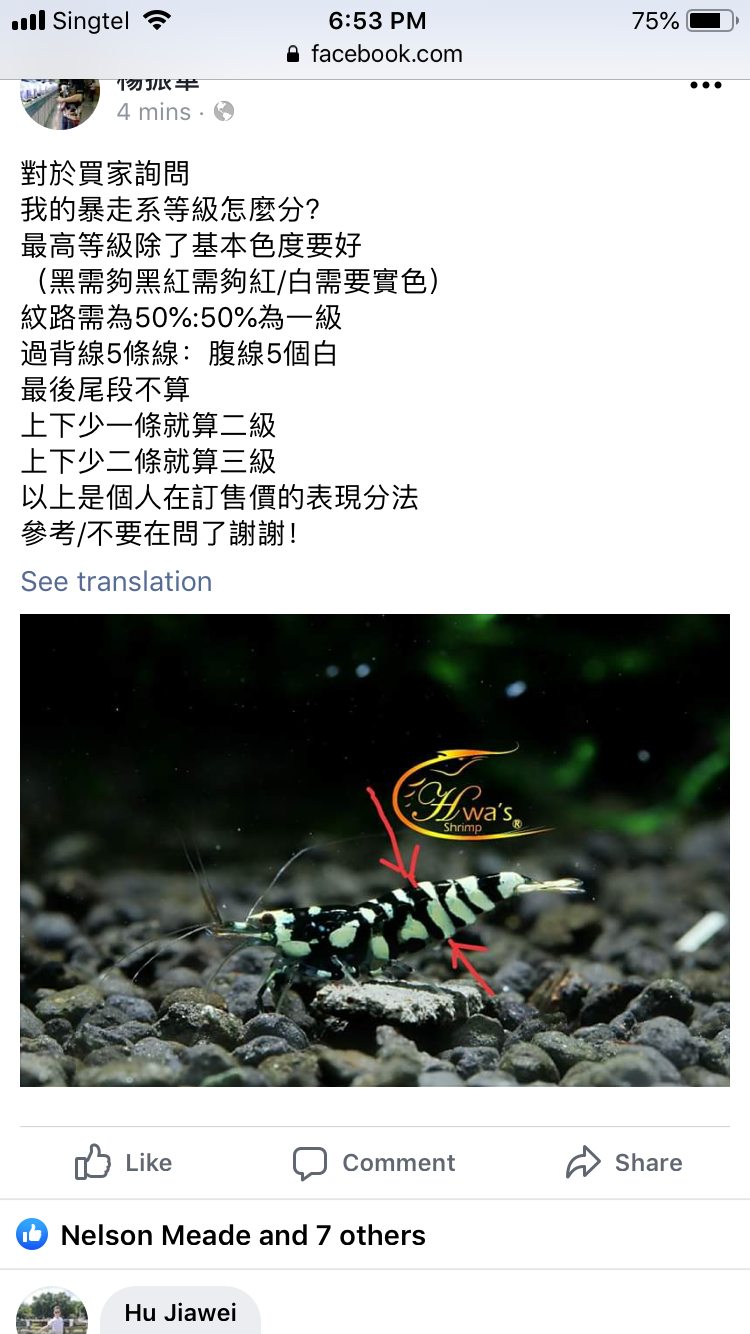
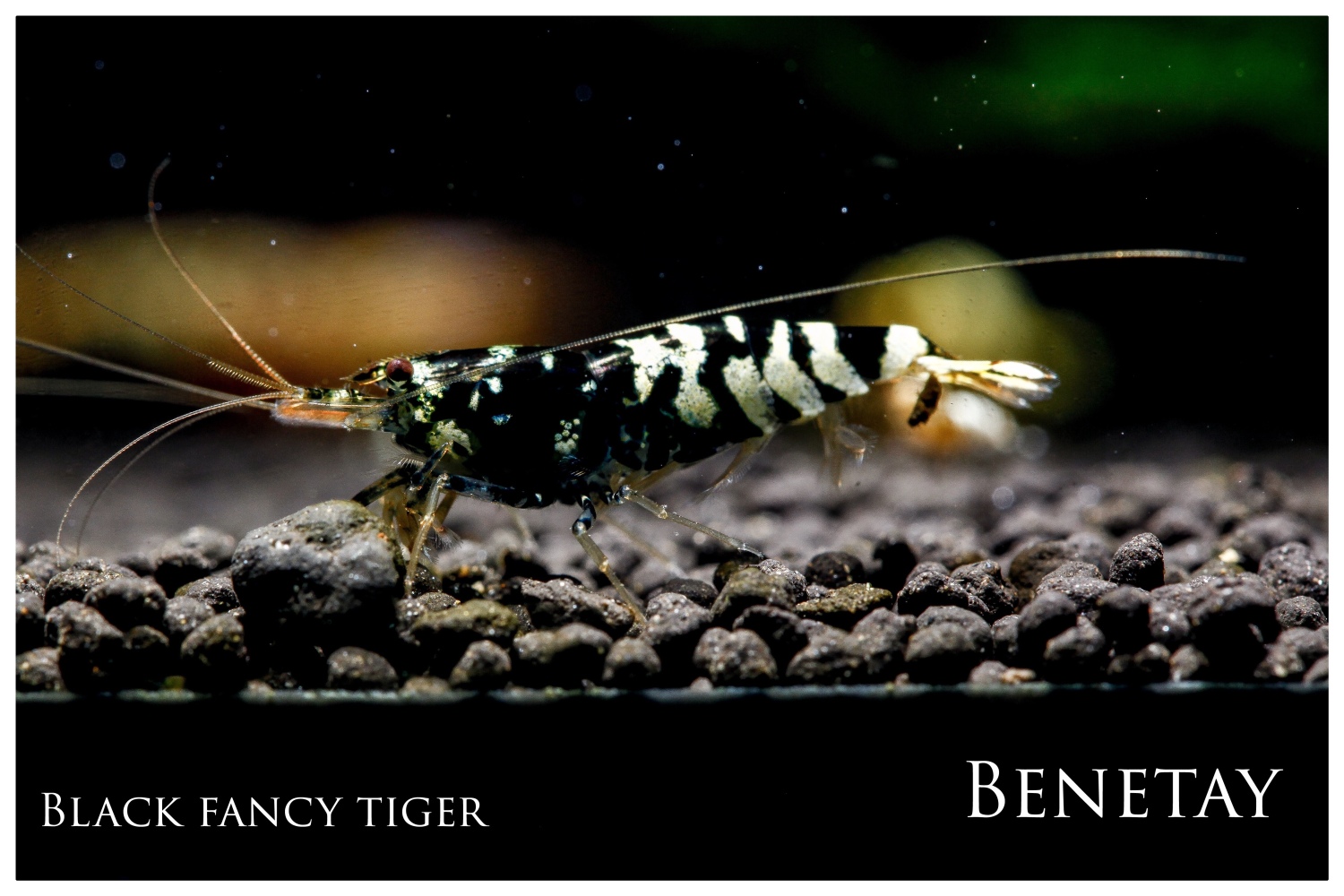

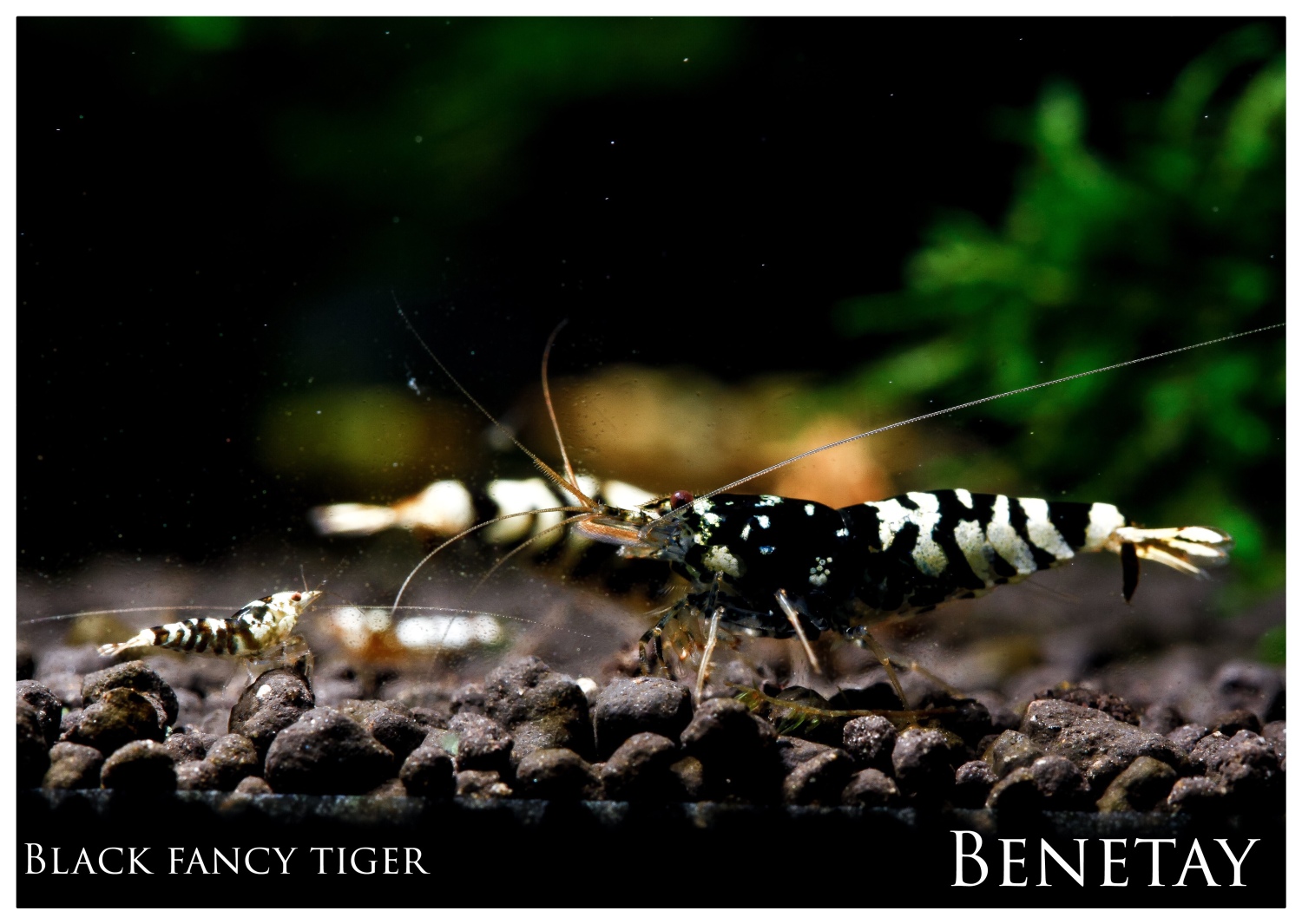
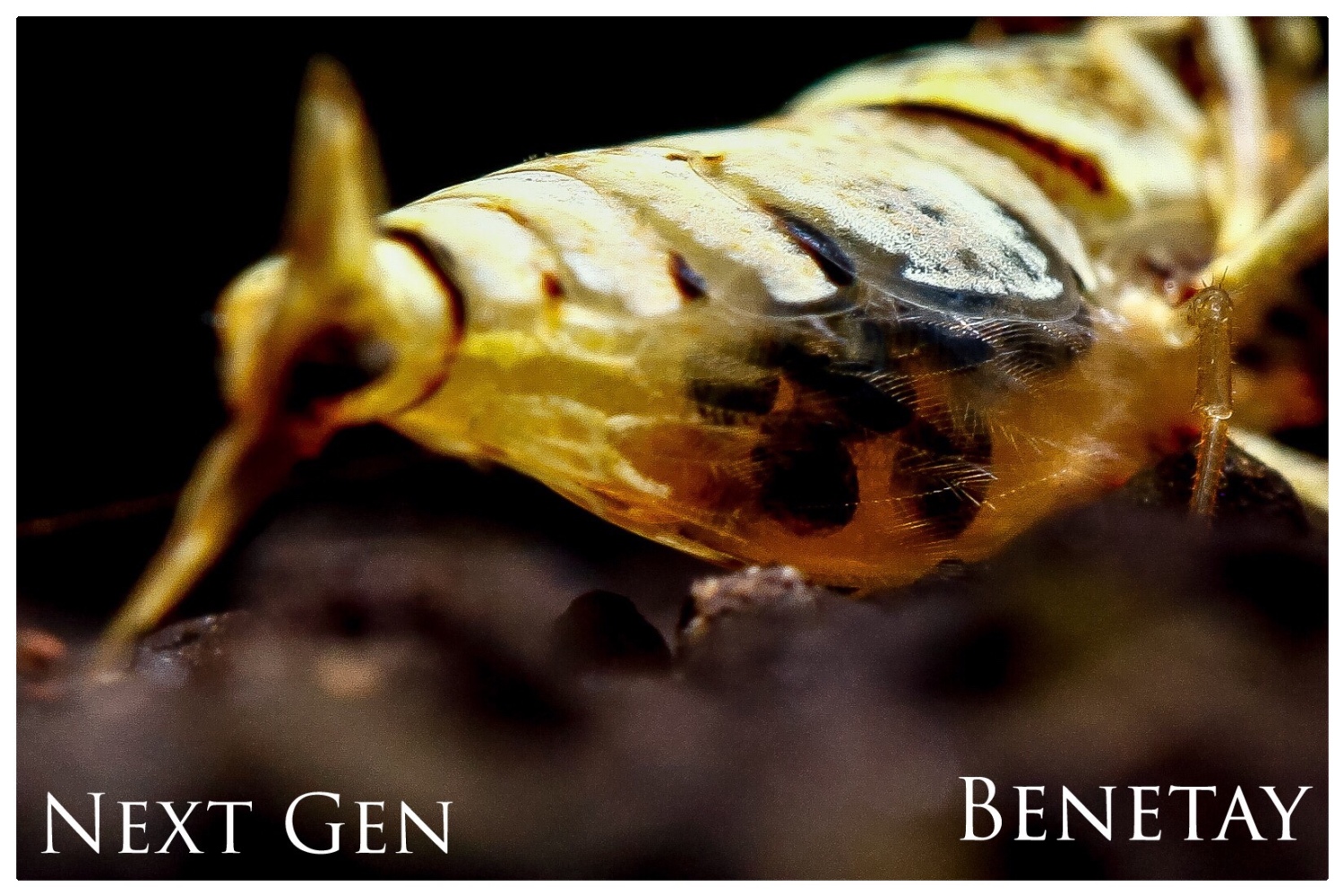



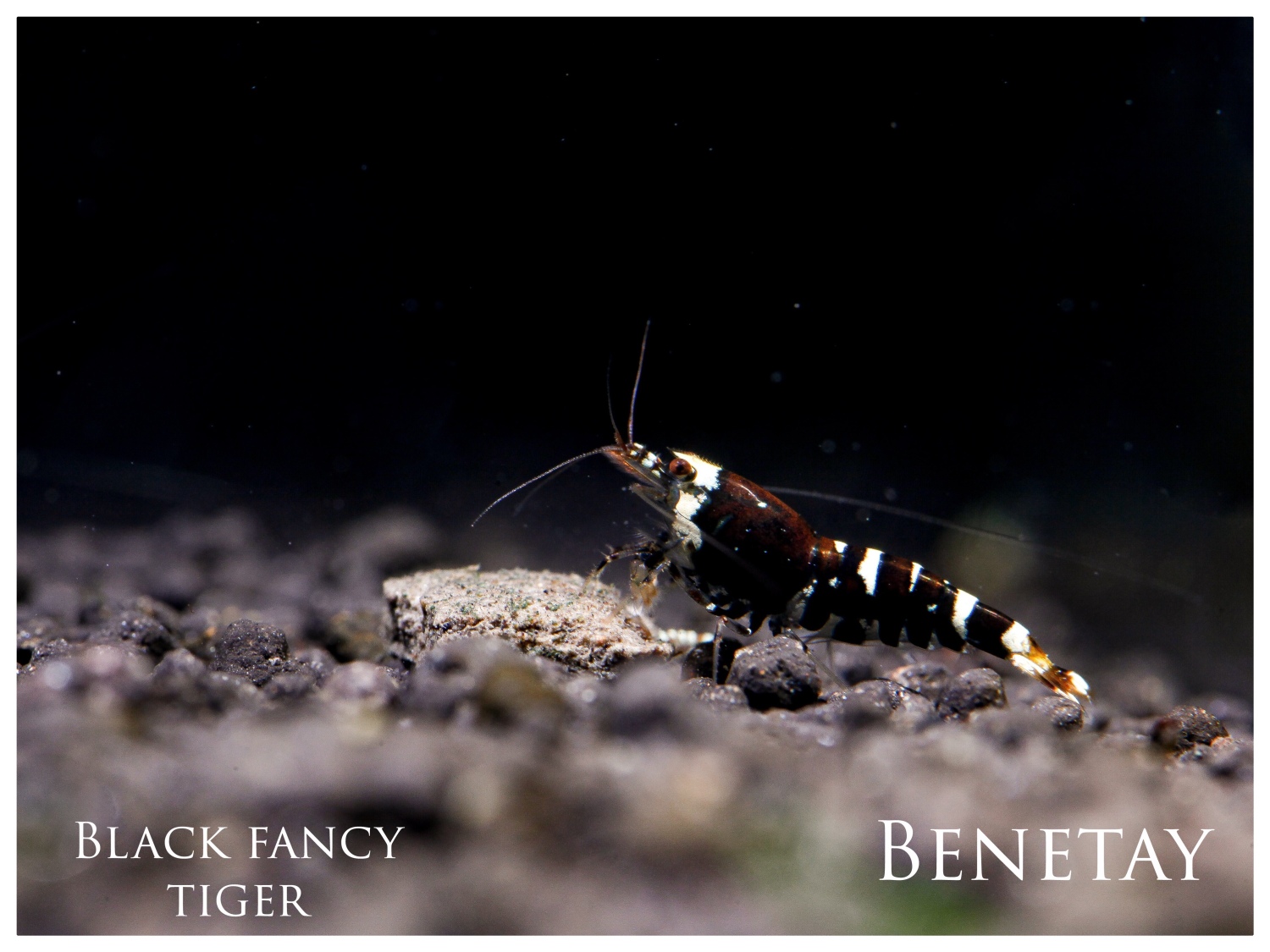





What is the key to success in breeding these black fancy? Can we attribute to luck and close our eyes to randomly breed hoping something good may appear?
In line breeding, luck plays a small part. So what is the critical success factors?
There are many ways to achieve quality black fancy tiger and below is a few elements that will increase the probability:
- Good genetic shrimps (top appearance)
- Sex ratio 1M:7F, 2M:14F,3M:18F
- Stringent culling (13% keep rate or 2 pairs @ first grade, 6% keep rate or 1 pair for 2nd grade shrimps, 3% keep rate or 1 shrimp for 3rd grade shrimps)
- Be responsible and not dilute the gene by selling non-graded shrimp as graded
- Know your source (ask tough questions)
- Does the seller know how to differentiate between a shrimp with galaxy or pinto gene in fancy tiger
- Can the seller show you his step by step shrimp in his breeding room how it was created
- Does the seller have documents or article when he make claims of how it was done. If yes good if not maybe a reference to the article from the original breeder will be handy
With the above (not exhaustive) list, you should be able to steer towards the right direction. Often breeders would want a cheaper alternative and faster approach but this is line breeding, it takes time and a lot of trial and error. If you are looking for a faster approach, you will need to pay the price the breeder took to create or stabilise the line and the years it took.
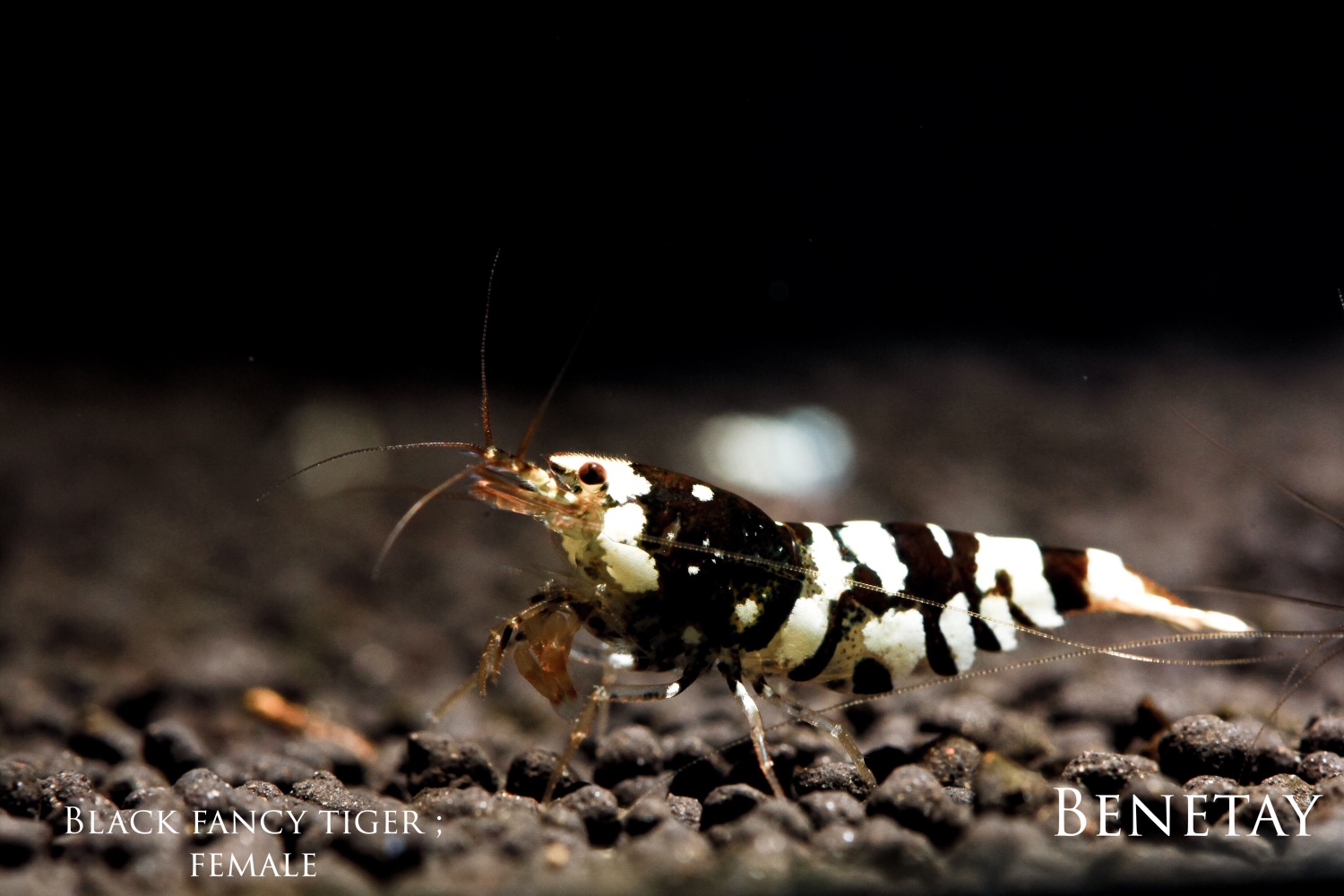


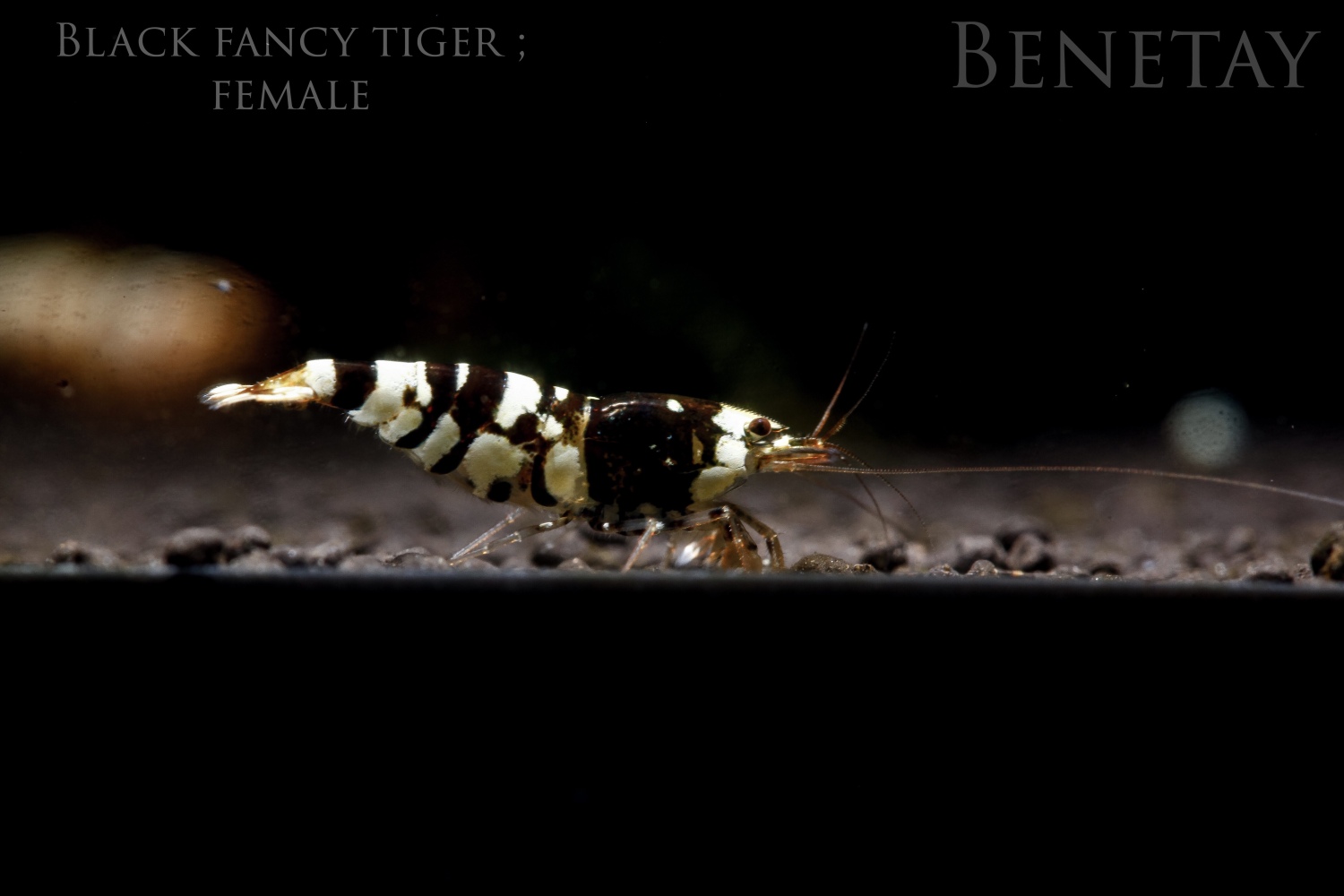
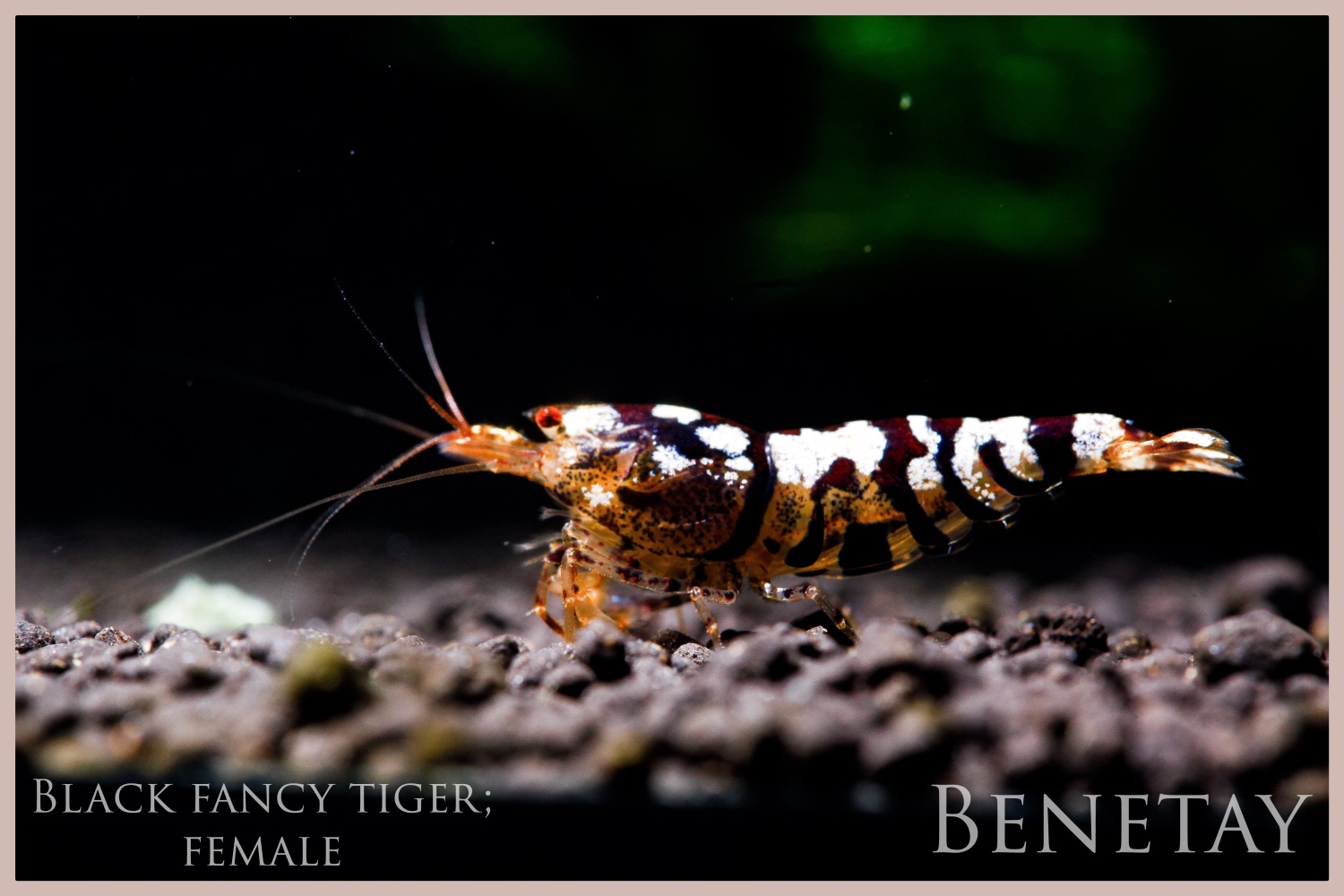
Let us dig a little deeper to understand what goes behind the scene when breeding black fancy tigers.
According to the Taiwan shrimp book, there is a short paragraph mentioning about a reputable breeder who did a test between pure black line female x red tiger male and red tiger female x pure black line male. The results were astonishing as the output of the first cross PBL female x red tiger male has high success rate of getting the black fancy tiger.
Line breeding start after the F1 shrimplet begin to show sign of success and to get few better gene F1 to cross back to the parent. After many generations the gene strengthen to develop into the renowned black fancy tiger.
Are there variations?
Certainly, in the gene pool if the breeder do not cull their shrimps many variations may occur. One such variation is the white fancy tiger.
White fancy tiger?
It really is a washed out cross between the PBL and tiger whereby the lines are disappearing and also the hino or Sabre tooth PBL marking is gone.

As you can see from the above picture, the shrimplets from this female has a very high percentage of white fancy when bred with a similar male. Is this the outcome you are trying to achieve? There are breeders “marketing” this as mosura fancy tiger. Personally I think that depending on which variant or outcome you would like, you can breed it to your liking.
- 25% of the outcome will be black fancy
- 25% of the outcome will be white fancy
- 25% of the outcome will be mix (black and white fancy)
- 25% of the outcome will be mix (white and black fancy)
This is in a very simple form of understanding of breeding but of cause in reality there is slight variations to it.
Coming back to variations, it is becoming difficult to ignore the fact that breeders (not commercial) who are in the know will share with you the outcome when they sell you the shrimp. If they are unable or trying to make a fast one, walk away. There are many reputable breeders who are more than willing to share.
Additionally, there are “black fancy tiger” lookalike but has pinto gene in it. The reason for doing so is to reduce the time to get the “black fancy”. However, with this the outcome of it will look like a black fancy but isn’t.

This picture is taken from a breeder and it does look like a black fancy, but the price is many times lower than black fancy because the shrimplets are more stable unlike the original. How do you even differentiate a lookalike black fancy and the original?
There will come a time where the difference could be difficult to discern but for now a few tell tale sign is that a pbl and tiger cross would have :
- Hino or pbl pattern on the top
- Black and white colors
- Pinto will give off very white kind of shrimplet and is very stable
- GT will have a vertical bar on the head
- Degree of black differs between GT, Pinto and PBL/BFT
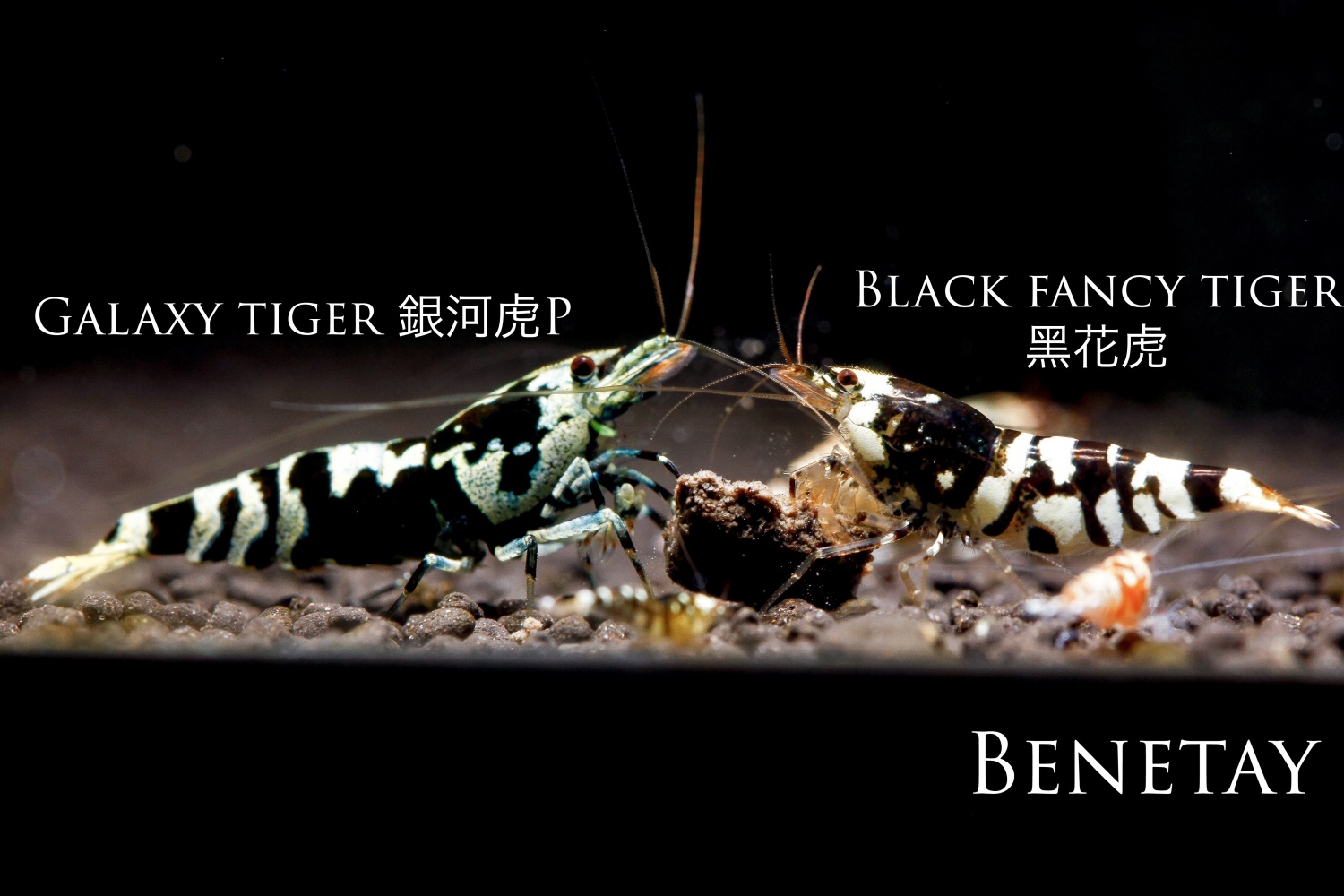
A warm invite to visit an overseas home breeder in Germany is really exciting. The thoughts of having to see the Number of tanks is like sending a kid into a candy store.



 Turkish coffee with the newly acquired friends!
Turkish coffee with the newly acquired friends! 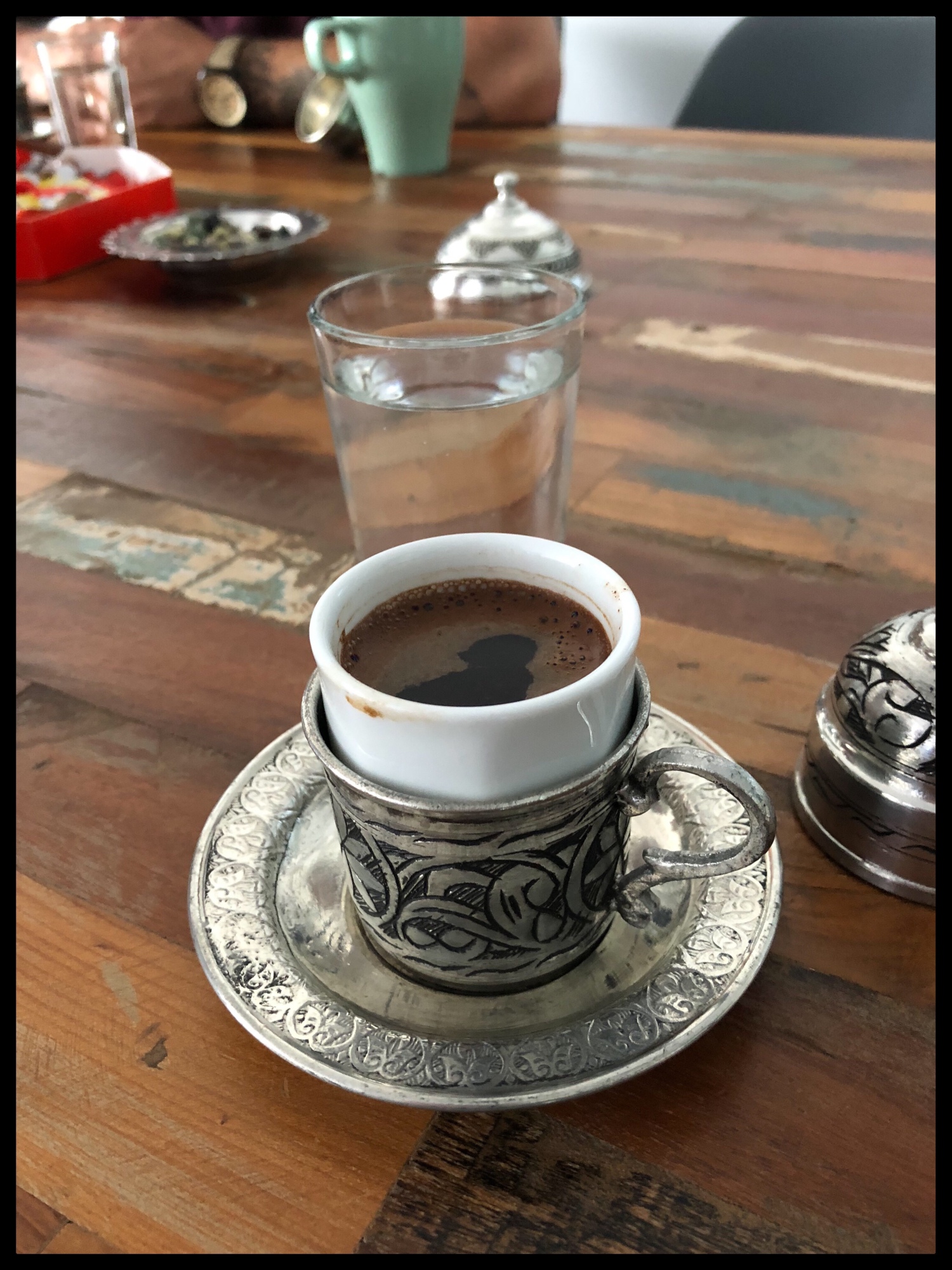

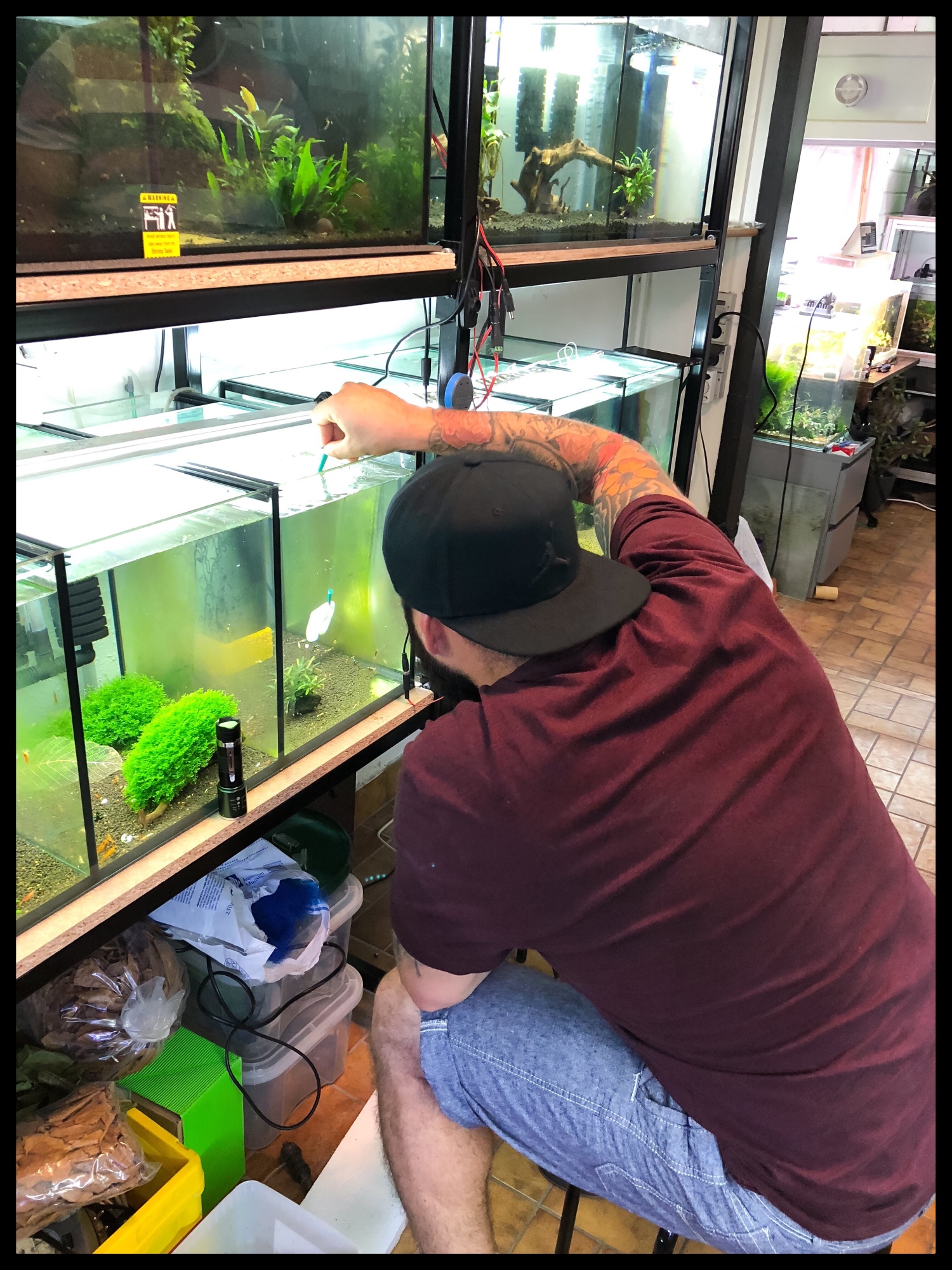
The boss catching shrimps! 

the wall of fame where overseas guest sign their name on the back of the door. Overall it has been a really good experience for me to learn from different breeders in various countries.
What i have learnt from them really is their hospitality that anywhere in the world you visit as long as you have the same hobby, it is easy to connect. We spent a full day discussing mostly shrimp stuff and how to be better. It is my honor to have met David and Kuzey, and to share the passion of shrimps half way round the globe is intriguing and exhilarating. Different products was used in their part of the world with local brands difficult for other country to enter due to EU regulations. They do have a special ‘fly’ liquid to mimic the female breeding hormone that make the males ‘fly’.
Additionally, their shrimps are kept in TDS at 160 and above which is very high considering that in Asia we keep them at 100-120 range. Overall a very good trip and will certainly meet them again if i am back in Germany.
